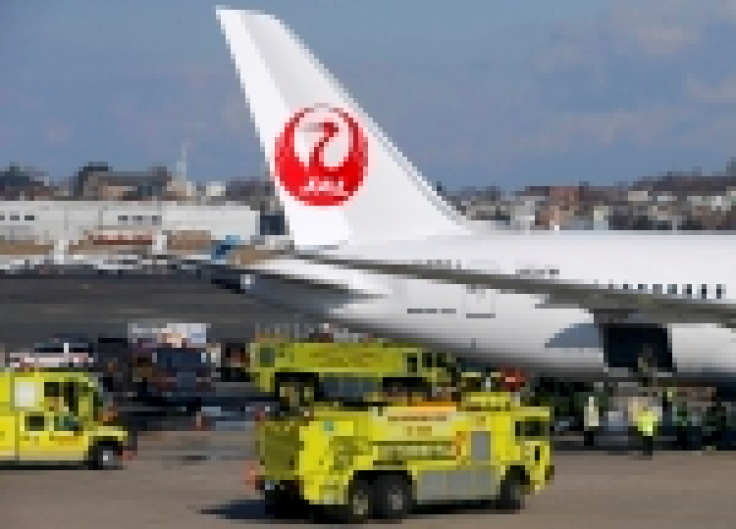FAA Issues Order Grounding All Boeing 787 Dreamliner Jets After Battery Fire In Japanese Aircraft

Following an emergency order from the Federal Aviation Administration issued late Wednesday, U.S. airlines are ordered to ground all Boeing 787 Dreamliners until the planes can be proven to safe. Earlier in the day, a Japanese 787 suffered a battery fire while in the air and had to land.
"Before further flight, operators of U.S.-registered Boeing 787 aircraft must demonstrate to the Federal Aviation Administration that the batteries are safe," the FAA said in a statement.
The FAA action is the first for an entire airplane model since a DC-10 crash in 1979 killed 271 people.
The order to ground the 787s was made hours after Japan’s All Nippon Airways was forced to immediately land a 787 in western Japan after a smoldering battery fire. Less than two weeks ago, another 787 belonging to Japan Airways suffered a similar battery fire while on the ground at Boston’s Logan International Airport.
Currently, United Airlines is the only U.S. airline to use the 787, with a fleet of six planes worldwide. The airline has immediately shifted passengers to other planes.
"United will immediately comply with the airworthiness directive and will work closely with the FAA and Boeing on the technical review as we work toward restoring 787 service," spokeswoman Christen David told USA Today.
Despite their sparse use in the United States, seven other airlines across the world own a total of 50 Boeing 787s, with 24 belonging to Japan’s All Nippon Airways and Japan Airways.
Other international air regulation agencies are expected to issue similar grounding orders for the 787s, according to the New York Times.
This comes as a huge setback for Boeing, which developed the 787 to usher in a new era in fuel-efficient commercial aircraft. The 787 is composed of new, lightweight composite materials and makes use of newer, more efficient engines, all of which add up to a more fuel-efficient plane overall. But apparently one that catches on fire all too easily.
While only 50 787s have been delivered worldwide, Boeing currently has orders for nearly 800 more Dreamliners. It is unclear how the recent grounding orders will affect demand for and the continued development of Boeing’s 787s.
What caused the battery fires that are proving the 787s less safe than previously thought? In an effort to preserve fuel efficiency, the 787 relies much more strongly on electrical systems onboard the plane than any other commercial aircraft. It seems that on the All Nippon Airways flight, the battery systems overloaded and caught fire.
"The battery failures resulted in release of flammable electrolytes, heat damage, and smoke on two model 787 airplanes," the FAA statement read. "The root cause of these failures is currently under investigation. These conditions, if not corrected, could result in damage to critical systems and structures, and the potential for fire in the electrical compartment."
According to USA Today, All Nippon Airways has reported several other problems with the Boeing 787s as well. On Jan. 9, a domestic flight to Tokyo was canceled on suspicions of brake problems. On Friday, All Nippon Airways reported problems with a 787’s cracked windshield and leaking fuel lines.
© Copyright IBTimes 2024. All rights reserved.












